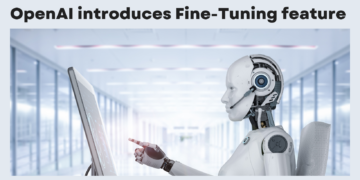In a groundbreaking development, Artificial Intelligence (AI) has taken a giant leap in the field of astronomy by independently discovering and classifying supernovae. The Bright Transient Survey Bot (BTSbot) has proven that AI is more than just a tool; it’s a game-changer that could reshape the future of space exploration and astrophysics.
The Rise of BTSbot
On October 5, 2023, BTSbot, a creation of an international team of scientists led by Northwestern University, achieved a significant milestone. This AI system detected, identified, and classified its first supernova, SN2023tyk, without any human intervention. The traditional process of discovering supernovae involves human astronomers and robotic telescopes working together, but BTSbot may change this paradigm.

The Astronomical Grunt Work
One of the most compelling aspects of AI’s involvement in astronomy is its ability to free human astronomers from laborious and time-consuming tasks. Over the past six years, human astronomers have spent more than 2,200 hours manually inspecting and classifying supernova candidates. BTSbot & its success suggests that we can now redirect this precious time toward investigating the mysteries of the cosmos and developing new hypotheses.
BTSbot: Training & Capabilities
BTSbot’s capabilities are a result of its extensive training on a colossal dataset of over 1.4 million images from nearly 16,000 astronomical sources, including historical images of supernovae and other celestial phenomena. This vast dataset empowers the AI to identify even faint or distant supernovae that might escape human attention.
The Power of Collaboration
One of the most exciting aspects of BTSbot is its ability to collaborate with other telescopes and AI algorithms. The system can observe, identify, and communicate with other telescopes to confirm the discovery of a supernova. This not only streamlines the process but also allows for the isolation of specific subtypes of stellar explosions, a critical aspect of understanding the universe’s secrets.
A New Era
Supernovae are some of the most spectacular events in the cosmos, often marking the explosive end of massive stars or the ignition of white dwarfs in binary systems. These phenomena are crucial for our understanding of the universe, but their discovery is like finding a needle in a cosmic haystack. Robotic telescopes scan the night sky repeatedly, hoping to spot any transient changes. Automated software assists astronomers in verifying candidates, but the critical step of collecting a supernova’s spectrum typically involves human intervention. BTSbot, however, bridges this gap by automating the entire process.

The BTSbot Test Run
To put BTSbot to the test, the researchers aimed to find a new supernova candidate, SN2023tyk, believed to be a Type Ia supernova located approximately 760 million light-years from Earth. The Zwicky Transient Facility (ZTF) robotic telescope discovered this potential supernova on October 3. On October 5, BTSbot not only identified SN2023tyk but also collected its spectrum from the Palomar Observatory’s Spectral Energy Distribution Machine (SEDM). This automated collaboration culminated in the classification of SN2023tyk as a Type Ia supernova, and the information was seamlessly shared with astronomers, all without human intervention.
A Glimpse into the Future
The successful discovery of a supernova by BTSbot is a significant milestone in the field of astronomy for several reasons. It highlights AI’s immense potential to revolutionize how astronomers discover and study supernovae. AI can scan vast volumes of data from robotic telescopes far more efficiently than humans, reducing the risk of false positives and enabling the discovery of many more supernovae, including those that are faint or distant.
What about the Human Potential?
Perhaps one of the most exciting implications of AI’s involvement in astronomy is the liberation of human astronomers. By automating the labor-intensive aspects of supernova hunting, astronomers can dedicate their time to interpreting observations and crafting new hypotheses about the origin of cosmic explosions. This newfound freedom could lead to breakthroughs in our understanding of the universe.
Challenges and the Road Ahead
While AI, through BTSbot, has demonstrated its ability to automate supernova discovery, there are still challenges to overcome. Further refinement of AI models is necessary to isolate specific subtypes of stellar explosions, making this technology even more efficient and accurate. Moreover, AI’s integration into astronomy must be approached carefully, ensuring that the human touch is not entirely eliminated from the process.
The Cosmic Revolution Continues
The story of BTSbot is not just a tale of technological achievement but a glimpse into the future of scientific discovery. As AI continues to push the boundaries of what we can accomplish in astronomy, it is clear that human curiosity, combined with the power of artificial intelligence, will lead us to new frontiers in understanding the cosmos.



























